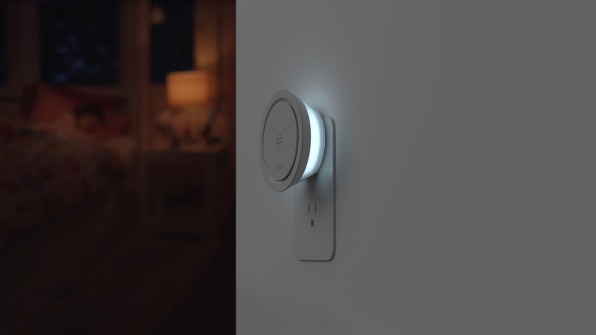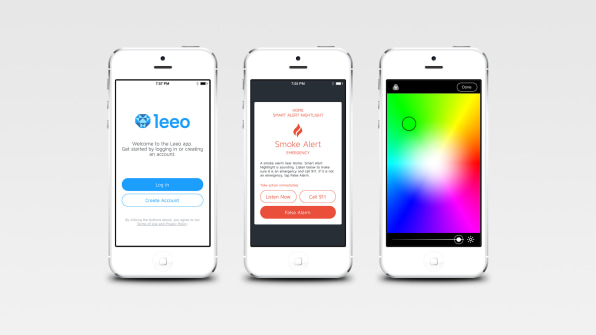How Much Does It Cost to Make a Penny
Asked about the future of the connected home last week, Nest founder Tony Fadell said it wouldn't be a single integrated Jetsons-like experience authored by Google or Apple. Instead, it would be made up of a universe of great individual smart products, which might not be able to communicate with one another, but still make our homes smarter and safer in one unique way.
Fadell could have been describing the Smart Alert, a new product by Palo-Alto based smart home startup Leeo. The Leeo Smart Alert is a $100 plug-and-play accessory that will listen for smoke and carbon monoxide alarms, alerting you and your emergency contacts if something goes wrong when you're away from the house. But the Smart Alert isn't just an alarm for your alarms. It's also quite possibly the world's most beautiful nightlight.

To use the Smart Alert, you plug it into the wall, and connect it to your home Wi-Fi, setting it up through an iPhone or Android app. Most of the time, the Smart Alert functions as a simple but beautifully designed night light, albeit one with some advanced features like an ambient light sensor, a ring to adjust brightness, and the ability to set the hue to one of 16 million colors. But the Smart Alert also has ears: it is programmed to detect noises in the frequency range used by smoke and carbon monoxide alarms. And if there's an emergency, the Smart Alert will go through a list of emergency contacts, telling anyone you specify–friends, family, neighbors, and even authorities, moving onto the next person if they aren't around–that there's a possible emergency in your house.
Yes, that sounds a bit like the Nest Protect, a combination smoke and carbon monoxide alarm that can also alert people if there's an emergency at home. But instead of letting people replace their smoke alarms with a smarter alternative, Leeo wants to make the same tech as easy to install as plugging it into a wall outlet, while tossing in a nightlight for good measure.
Although Leeo is a new company, the guys behind it come from an all-star pedigree. The company's lead product designer is Ammunition Group's Robert Brunner, the guy who designed everything from the original Beats to the Polaroid Cube. The company's COO is Charles Huang, who previously created Guitar Hero. And the company's CEO and co-founder is Adam Gettings, who previously worked building first response robots like the ones which could be seen sniffing for explosives after the Boston Marathon Bombings, but who changed his career focus when a friend's house burned down when he was away from his home.

"A friend of mine was out one day, and while he was away, there was a house fire," remembers Gettings. "It deeply disturbed me that our homes have no way of telling us what's going on when we're away."
Leeo hopes to release products that allow customers to feel safe at home, even when they're not physically there. But the barrier to entry has to be low. That's why, for company's first product, it was important to create an inexpensive product that could seamlessly integrate into people's homes, and as easy to install as, well, plugging in a night light.
"We didn't want to make something that had to be shoehorned into people's lives," says Ammunition's Matt Rolandson. "It had to feel natural." But why a nightlight? "You could say it was a happy accident: the Smart Alert needed a power supply, and nightlights are always plugged into the wall," Rolandson says. "We realized that a nightlight was just an optimal way to put the Smart Alert into people's homes in a way that is soft, warm, and comforting."
That's what makes the Smart Alert such a satisfying metaphor: it's a nightlight that illuminates more than one kind of darkness. And although Leeo won't say what their next product is, they say that it'll probably be something more like the Leeo than what we usually think of when we talk about the connected home.
"Investors are all hyperventilating right now about the wide-scale reinvention of the home," Rolandson says. "That just seems very stressful to us. With Leeo, we're just trying to amplify what people expect from what's already in their house, not tear their house down and rebuild them from scratch."
How Much Does It Cost to Make a Penny
Source: https://www.fastcompany.com/3037340/ammunition-group-helps-redesign-the-nightlight-for-the-connected-home
0 Response to "How Much Does It Cost to Make a Penny"
Post a Comment